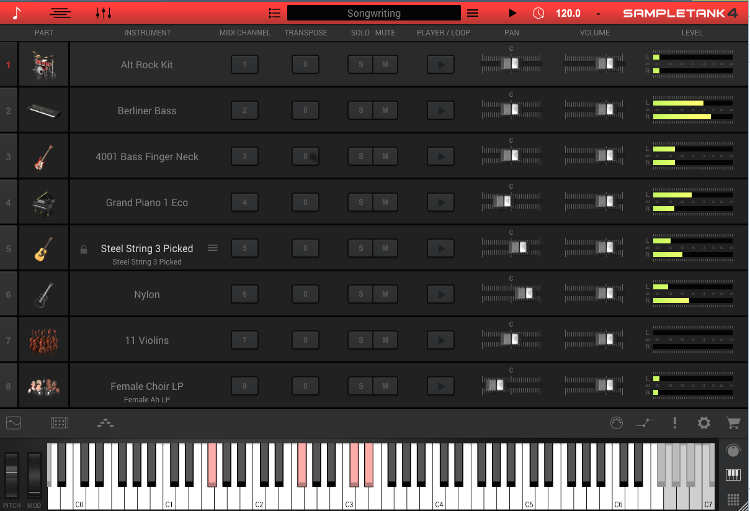When you’re songwriting, you want nothing to get in the way of creativity
Songwriting benefits from as fast a workflow as humanly possible—so for those reasons, you’re better off starting the songwriting process with MIDI rather than recording audio (if you’re not a keyboard player, even a simple MIDI guitar controller like the Jamstik+ or You Rock guitar will do the job). Here are the two main advantages.
TRANSPOSE UNTIL YOU FIND THE RIGHT KEY
Transposing audio is possible, but this usually degrades sound quality. With MIDI instruments, you can transpose quickly to different keys, while retaining sound quality. When you’re looking for the right key for your voice, you can find it in seconds.
ADJUST TEMPOS EASILY FOR THE BEST “FEEL”
When songwriting, there can be a tendency to play a bit more slowly tentatively because you’re feeling your way around the chord progressions, lyrics, etc. I’ve seen many forum posts from people who, as they start mixing a song, want to increase the tempo a little bit. However, altering tempos in some DAWs can be tricky, and can also affect the audio fidelity.
Once you’ve established the song’s framework with MIDI, before recording final versions of your audio tracks, experiment playing against different tempos until you find the one that feels right.
USE INSTRUMENT TEMPLATES FOR SONGWRITING
To kick off a songwriting project, my tool of choice is a multitimbral synth, like IK Multimedia’s SampleTank (shown above). This multi-timbral setup contains 16 different instruments, which provide a palette for songwriting. Because the instruments are loaded and ready to go, it’s possible to lay down multiple tracks quickly to create the song’s overall shape, which makes choosing the key and tempo just that much easier. Once the song starts shaping up, then you can start replacing any “placeholder” parts with acoustic and electric instruments.
